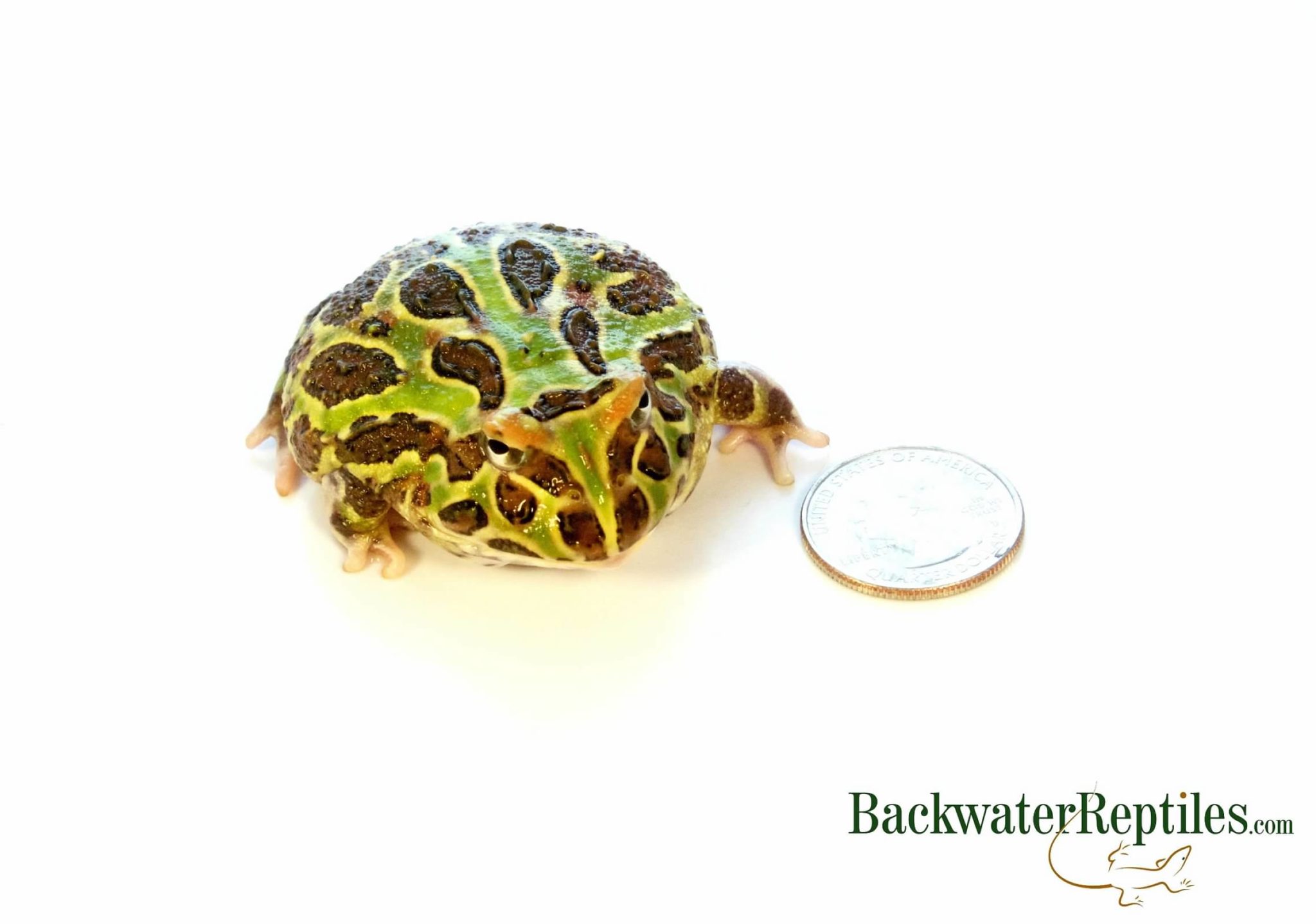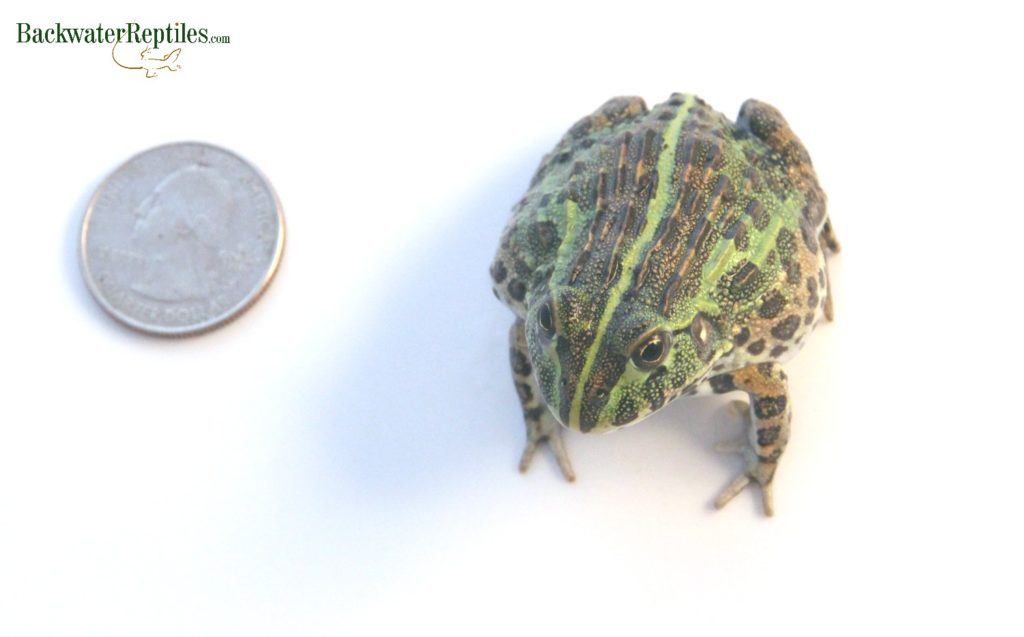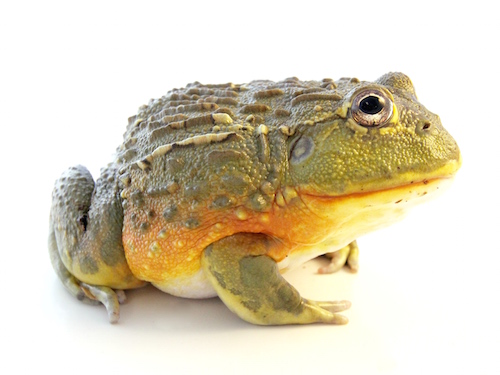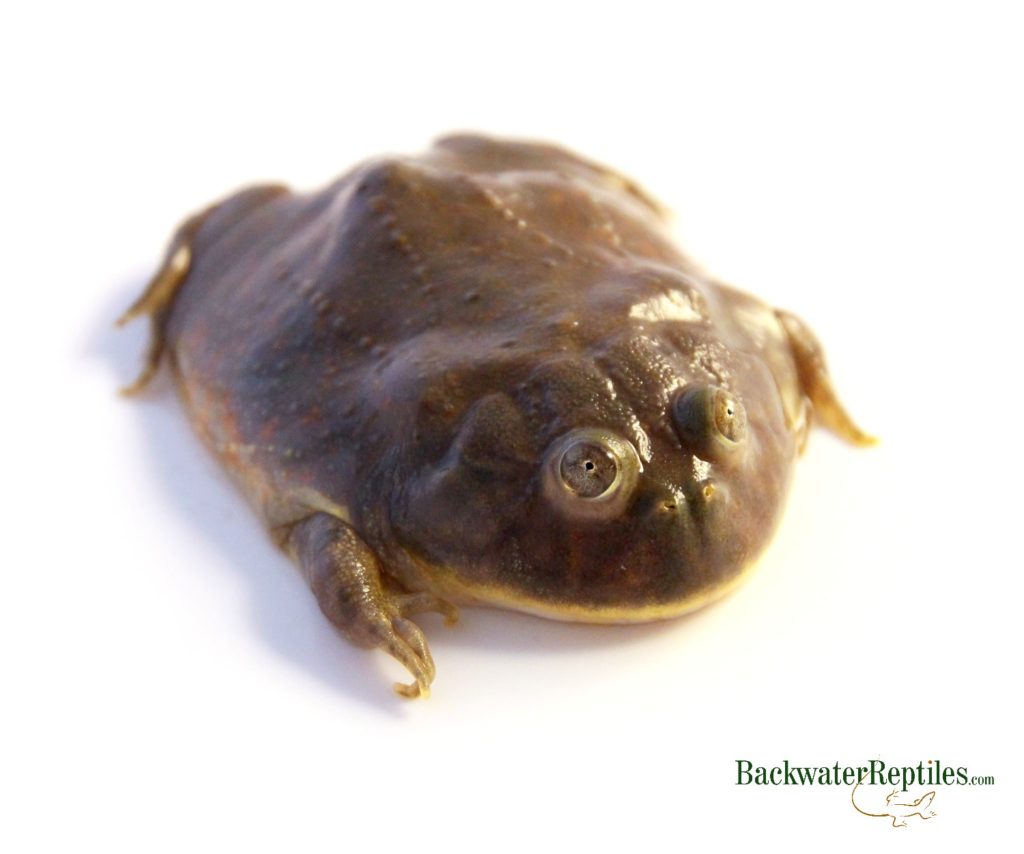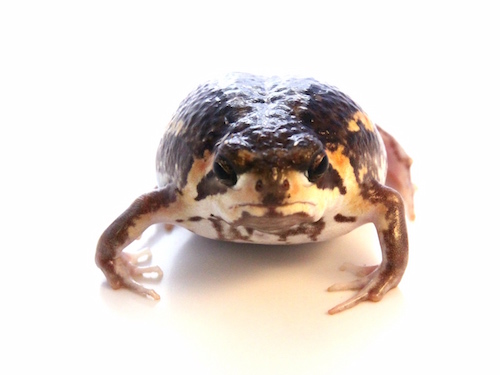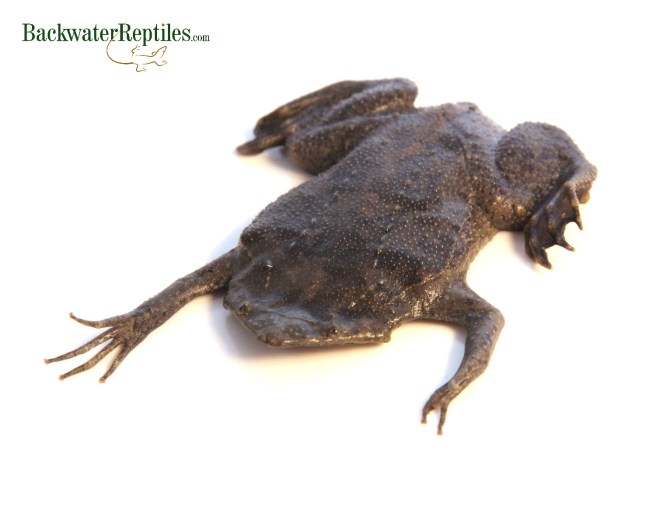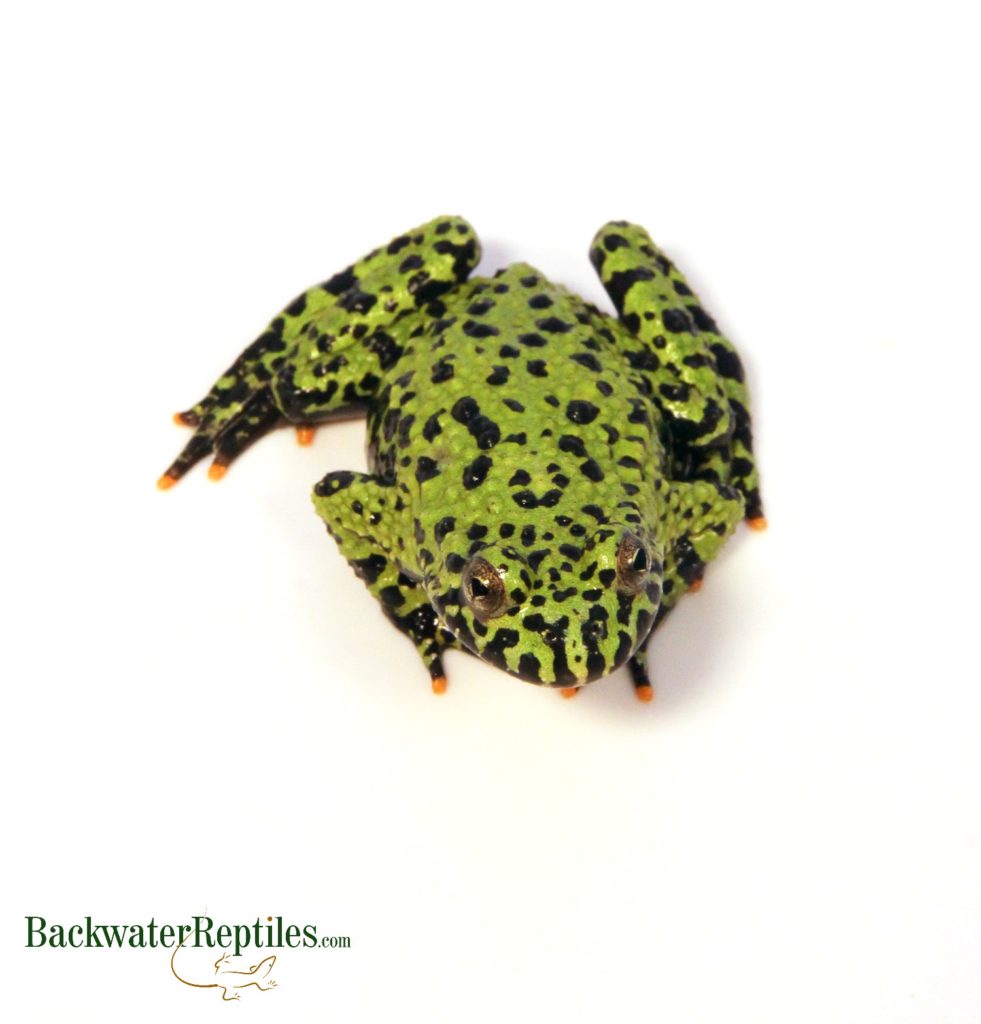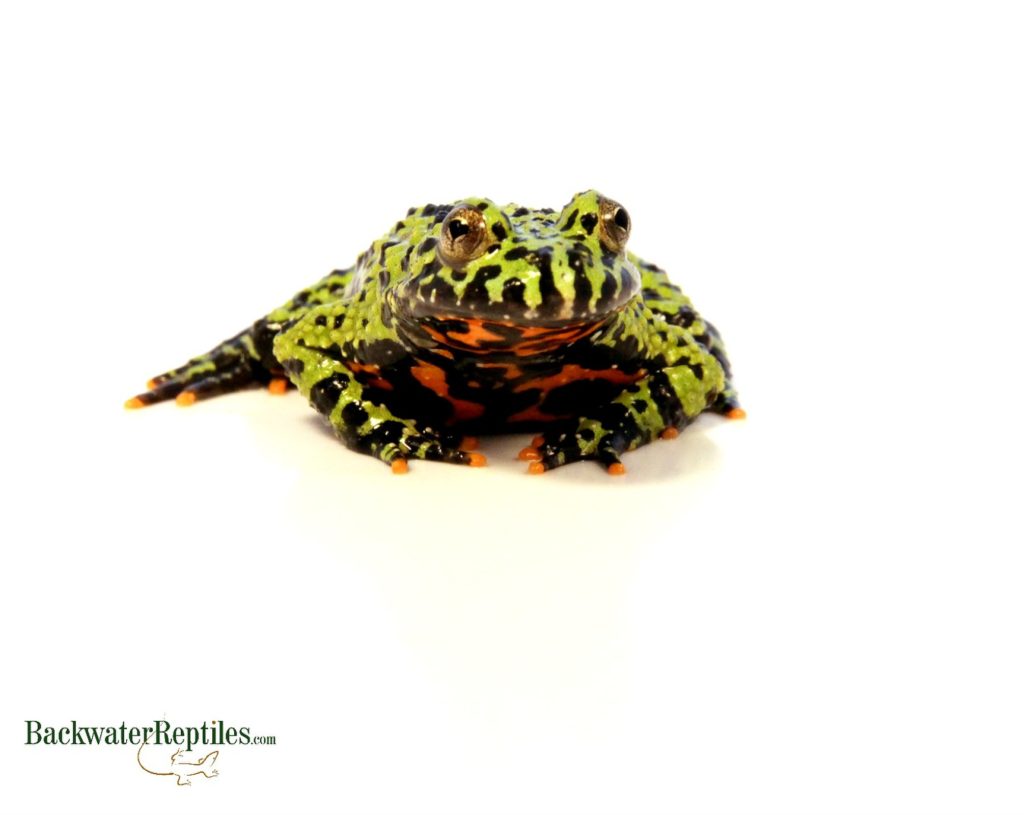Are you considering getting a White’s tree frog for a pet, but you’re unsure what to feed it?
White’s tree frogs eat insects. In captivity, this means they will eat a wide variety of feeder insects including crickets, roaches, worms and other bugs. Ultimately, the insects you choose to feed your White’s tree frog is up to you, but a varied diet is always beneficial.
This species of frog is so popular that it made our list of the best pet tree frogs.

What type of insects should I feed my White’s tree frog?
White’s tree frogs, AKA Dumpy tree frogs, are insectivores. They only eat living insects. This means that you as an owner are free to choose from a variety of feeder insects to fulfill your frog’s dietary needs.
The most commonly available feeder insect is crickets. You can find feeder crickets at commercial pet stores, feed stores and through online vendors. The main thing to take into consideration when feeding your White’s tree frog crickets is the size of the crickets.
A baby frog cannot eat a full grown cricket and likewise adult frogs should not be eating baby or pinhead crickets as their primary food source. You want to get a cricket that your frog can comfortably eat that will satisfy its appetite.
While crickets do make great staple food for White’s tree frogs, we also recommend Dubia roaches if you have a good supplier. These roaches are very high in nutrients and pack quite the punch when it comes to keeping your frog fed and happy. Again, since roaches are available in many sizes, the only thing we’d mention that you need to be aware of is the size of the roach you will be giving to your frog.
Other great options for White’s tree frogs are reptiworms, wax worms, hornworms and mealworms. All of these insects will squirm or move about in a manner that triggers your frog’s feeding response. We recommend that if you want a real show you hand feed using tongs. It can be quite entertaining since Dumpy frogs have large appetites.

Should I feed my White’s tree frog vitamin supplements?
In short, the answer is yes!
Most reptiles and amphibians that are kept in captivity do require some amount of additional calcium and vitamin supplements in their diet. White’s tree frogs are no exception.
In our experience, metabolic bone disease and other associated disorders from poor nutrition are less common in pet amphibians than they are in reptiles. However, that does not mean that you should be lax in administering the proper vitamins and nutrients your frog needs.
We recommend dusting your feeder insects with Sticky Tongue Farms’ indoor supplement at least once weekly, if not more. Younger frogs should be given dusted insects every feeding, but as your frogs mature, you can dust less frequently.

How often should I feed my pet White’s tree frog?
Baby frogs should be fed at least once daily. Since most owners will likely be feeding crickets, we do advise that you either tong feed them or place a very limited number of crickets in the cage at any given time. You do not want the cage overrun with crickets as they can actually injure the frog. If you find your frog hasn’t eaten, we advise trying again in the evening when the frog will be most active.
Juvenile to adult frogs don’t need to be offered food as frequently as babies do. We still usually feed them every day until they are considered subadults. At this life stage, we typically feed them three times per week or about every other day.
The key to health when it comes to frequency of feedings is to note your frog’s weight. Dumpy frogs can easily become overweight if you allow them to. Watch closely to see how bulgy your frog’s tummy is and how much padding it seems to have on its face and leg areas. Obesity is not healthy, but obviously neither is being too thin.

Where can I find insects for my White’s tree frog to eat?
Most commercial pet stores will have a few sizes of crickets on hand for reptiles. They often also have live mealworms. However, don’t buy prepackaged dead insects such as flies or crickets for your White’s tree frog. Your frog will simply not eat dead bugs.
If you want to conveniently obtain a variety of feeder insects for your frog, we do recommend ordering feeder insects online. Backwater Reptiles sells a wide variety of feeder insects in bulk quantities to last longer. Our feeders include a variety of sizes of crickets, roaches, reptiworms, fruit flies, hornworms, mealworms and wax worms to name a few.
Will White’s tree frogs eat mice?
Yes, adult White’s tree frogs can and will eat baby mice. In fact, it’s a great treat for them and can boost their growth noticeably. I wouldn’t recommend it more than once every week or two. If you feed them baby rodents too often, they’ll get obese and it’ll end up shortening their lifespan.
Conclusion
White’s tree frogs like to eat and will accept a broad range of insects at mealtime. Crickets are the most commonly used feeder insect for this species of frog, but we highly encourage owners to branch out and utilize other types of feeder insects for different nutritional value.
No matter what type of insect you feed your White’s tree frog, make sure that you have an appropriate vitamin supplement on hand to dust them with. It’s essential for your frog’s best health.
If you ever have any questions about what type of insect or what size feeder insect you should buy for your pet White’s tree frog, you can reach out to our friendly customer service team by emailing sales@backwaterreptiles.com.
If you’re interested in getting your own captive bred White’s tree frog, you can buy one of our’s by clicking this link. We have snowflakes, blue-eyed, and greens available, and all are produced by the world renowned Frog Ranch.



